The Cost of Victory (Crimson Worlds) Read online
The Cost of Victory
Crimson Worlds: Book II
By Jay Allan
Copyright © 2012 AJ Investments
All Rights Reserved
By Jay Allan
Tombstone (A Crimson Worlds Prequel)
Marines (Crimson Worlds I)
The Cost of Victory (Crimson Worlds II)
A Little Rebellion (Crimson Worlds III)
(December 2012)
The First Imperium (Crimson Worlds IV)
(March 2012)
The Last Veteran (Shattered States I)
The Dragon's Banner
Join my email list at
www.crimsonworlds.com
for publication announcements
Email list members will receive
free copies of select stories
throughout the year
Please feel free to email me with any
questions at [email protected]
I answer all reader emails
Chapter 1
AS Cromwell
Flagship, Alliance Grand Fleet
Gliese 250 System
There was a battle raging in space. Unimaginably far from Earth, around a massive space station orbiting a gas giant in a binary solar system, squadrons of ships fought each other in a desperate struggle.
In the combat command center of his battle-scarred flagship, Admiral Augustus Garret sat quietly and considered the Western Alliance fleet he commanded. Garret was young for such an assignment, but he was the hero of the Second Battle of Algol and had been in the forefront of a tremendous resurgence in Alliance fortunes after the disastrous defeats of the early war.
Like the rest of the officers busily working around him, Garret wore a tight-fitting pressure suit that allowed him to endure the G-forces he would experience during combat. The suit could also keep him alive if the hull was breached and the control center lost pressurization. That is, of course, if he wore the helmet lying next to his command chair, the one he had carelessly tossed aside.
The command center was cramped, like everything on a spaceship, and it was dominated by a massive screen, currently displaying the locations of the 164 vessels that comprised the fleet. There were 9 large blue ovals, each representing one of the capital ships under Garret's command. They were surrounded by clouds of smaller dots, the support ships and escorts of each battlegroup. On the extreme flank of the fleet was a cluster of small yellow dots, the ships of the allied PRC task group, mostly mid-sized cruisers and squadrons of small attack ships.
The Alliance capital ships were all large and powerful, but the three vessels of the new Yorktown class were something different, each a full two kilometers in length, bristling with weaponry and carrying 4 squadrons of heavy fighter-bombers. This would be the first engagement for these behemoths, and Garret was counting on their firepower to make the difference in the battle now just beginning. He'd considered transferring his flag to one of the new ships, but he'd ridden the Cromwell since the victory at Second Algol, and he wasn't going to abandon her now.
Maneuvering a space fleet in battle, with the many variables and tremendous distances involved, was a giant game of anticipating the opponent's moves - a complex exercise in making educated guesses. Augustus Garret was a master of the art, having displayed an uncanny ability to predict his adversaries' intentions.
The system in dispute was Gliese 250, well over 100 light years from Earth, and the battle taking place was large - the biggest ever fought, in fact. Gliese was a vital Caliphate choke point that had been seized in a daring surprise attack when Erik Cain's Marines boarded and captured the giant station. The system had been deep in Caliphate space until an Alliance survey team located a previously undiscovered warp gate, redrawing the strategic map in an instant. The new gate led directly from a major Alliance base to the Gliese system and provided an opportunity to launch a surprise attack on a vital sector the enemy had considered secure.
The capture of Gliese had allowed the Alliance to mount a series of follow-up campaigns against systems on the enemy's frontier, cutting off vital supply sources and dramatically changing the outlook of the war. The Alliance had been losing, but now they seized the initiative and won a series of unanswered victories.
The Caliphate's first attempt to retake the system had been repulsed, and now they and their CAC allies had assembled a massive combined fleet for a second attempt, one which was opposed by every naval unit the Alliance high command could scrape up.
The first group of invaders had come in fast, bursting through the warp gate on a carefully plotted vector that took them directly at their target, the hulking, kilometers long station. Their plan was to gut its defenses with the first task force then fight the defending fleet with a second wave twelve hours behind.
The enemy was coming through the warp gate from Alpha Cephei, which was approximately 80 light minutes from the station. The defenders had good intelligence from the scanners deployed near the gate, which transmitted their data at light speed back to the defending fleet, giving the Admiral a complete report on the enemy first wave seven hours before they entered combat range.
Unfortunately for the attackers, Admiral Garret had anticipated their strategy and positioned his ships for maximum effect. The Western Alliance fleet he commanded was large and powerful, but it was still smaller than the Caliphate-CAC force he faced, and he knew it would take every trick he had to win this fight. Conventional tactics called for meeting the invaders near the warp gate, seeking to hit the enemy before they had time to shake themselves into battle order. But no Alliance ships awaited the enemy as they emerged into Gliese space. Garret had his ships deployed back near the station, waiting. His strategy was to bleed the enemy as much as possible with his fixed defenses and then, with the odds hopefully more even, get right in their faces and fight it out to the death.
The minefields were the first thing the invaders discovered. Far thicker than the attackers anticipated, they were positioned perfectly along the path of the assaulting force. They savaged the incoming ships, which were moving at nearly 0.15c and could not apply enough thrust to evade the ECM-masked fields when they were finally detected.
The mines did not rely on a ship striking them directly, an occurrence of almost infinite improbability. Instead, they released up to 200 individual warheads, small high-thrust rockets blasted out in all directions and carrying individual payloads of up to 500 megatons, creating a large area effect. Even a near miss with one warhead could cause catastrophic damage to a target vessel. A direct hit would vaporize anything manmade.
The minefields tore apart the enemy first wave, mostly cruisers intended to strike the station as they passed, then decelerate to regroup. The attacking vessels plunged right through the most heavily mined sector, and hundreds of the devices were triggered, causing thousands of high-yield warheads to explode in the path of the enemy ships.
Garret watched the scanning reports closely. Ten, at least, of the enemy ships were destroyed outright, and 20 or more suffered significant damage. The force was depleted and disordered when they finally entered range of the station and launched a ragged salvo of missiles. The enemy fire, degraded by the damage from the minefield, was far less effective than Garret had feared, and his defensive countermeasures had been extremely effective. Launched at very high speeds and clearly targeted for the station, the missiles were on vectors Garret had predicted, which made them easy targets for the linked point defense arrays of his defending forces.
He had taken a chance, positioning his entire fleet nearly motionless, in direct support of the station. The resulting combined defense network was extremely potent against missile fire, but it left his shi
ps out of position to engage enemy vessels directly. If the attackers had sent their capital ships in at moderate velocity, formed up for battle, Garret could have been at a disadvantage. But his instincts had been spot on. Missile after missile was intercepted, and in the end only three got close enough to harm the station - mostly surface damage and radiation penetration in outer compartments.
The station did not sit idly by and endure the enemy's fire; it unleashed a heavy missile broadside against the oncoming ships just before they entered energy weapon range. The missiles were launched on a broad spread, timed to disorder and damage the enemy ships before they entered energy weapon range.
The attacker's vector still took them right toward the station, and they attacked with their close-range laser batteries as they closed. Pulses of highly focused energy ripped into the station, destroying surface systems and slicing through armor plating. Lasers are difficult to defend against, though their short effective range tends to limit their effectiveness.
The defenders did have some countermeasures, however. They fired spreads of torpedoes that exploded and filled the space around the station with clouds of reflective metallic particles. Informally called angel dust, it was designed to diffuse and reflect the incoming lasers, reducing their effectiveness against the target. Highly effective when properly targeted, it was a difficult system to use well; the timing and positioning had to be perfect.
Garret was pleased so far. The station didn't have heavy laser batteries, only smaller anti-missile units, so the enemy's close range fire went unanswered. Still, they had hit the enemy hard with their missile volley and, with the damage done by the mines, the attacking task force was down to 30% effectiveness. Even more importantly, it would take them 5 or 6 days just to decelerate. It would be at least a week before they were again a threat. He had the station fire another volley after then as they passed, but it would take those missiles, fired from a stationary platform with no intrinsic velocity, a long time to accelerate and catch the enemy force. It would at least give the enemy something to think about as they decelerated and attempted to re-vector back toward the battle zone.
The Western Alliance fleet, positioned for missile defense around the station, was not formed to fire at the enemy task force as it zipped by, but Garret wasn't concerned. He wanted to preserve his supply of missiles anyway; the enemy battleline would be coming.
With the initial attack on the station repulsed, the admiral quickly shifted his attention to the inevitable second assault. He barked out commands, ordering his group leaders to get their ships moving. The enemy's next wave, briefed by spy drones accompanying the first group, would know his deployments, and he was a sitting duck if he remained where he was. His ships were at a dead stop and tied into the station's defensive network - positioned to intercept missiles, not engage enemy capital ships. Now he needed to build some velocity, and he needed to do it quickly.
Fusion reactors ran at full capacity and beyond, as his battleships and support vessels applied maximum thrust. The crews, wearing protective pressure suits like Garret’s own, were strapped into their acceleration couches as their ships' AIs executed full thrust burns, straining to get the fleet into combat formation as quickly as possible. Within moments, the slowest ships in the fleet were accelerating at 12g, and the newer vessels at 16-18, the maximum their drug and technology-assisted human crews could endure for any sustained period.
Attack boats and escort vessels clustered around the capital ships, taking up their support positions. When they were patrolling the frontier or scouting deep space the smaller ships had many uses, but in a major battle they had one duty – support the capital ships.
The vessels of the fleet were executing controlled burns to build velocity, cutting thrust at precise intervals so the crews could physically recover from massive g forces and analyze incoming data. While enduring the pressures exerted by maximum acceleration, even experienced crews could do little but lie motionless on their couches.
"Admiral...energy spike at the Alpha Cephei warp gate. Inbound transit imminent." Lieutenant Simon was young to be communications officer to a full admiral, but she was a rock. The biggest fleet ever assembled was probably going to come streaming through that gate in a few seconds, but her voice was calm, steady.
"Acknowledged." Here they come, Garret thought, then...no, that data's more than an hour old. They are already here. He looked at the plot of the fleet on the main screen and sighed quietly. A lot of his men and women were going to die over the next couple days. "Nelson, engage."
"Engaged, admiral." The voice was emotionless, tinny. The naval AIs didn't have the vaguely creepy soothing voices the Marine versions did, though the tradition of naming the things was shared. Garret's choice was painfully unoriginal. There were dozens of Nelsons, as well as Halseys, Porters, and other wet navy greats among the quasi-sentient artificial intelligence units in the service. "Enemy units now entering system, inbound at .06c and decelerating."
Garret leaned back in his command chair. His units were currently accelerating at 6g, which was uncomfortable but bearable as long as he remained seated. "I want breakdowns as soon as they are available, Nelson. Raw ship totals and battlegroup formations."
"Yes, Admiral." The naval AIs also lacked the more creative personalities of their Marine counterparts. The navy thought that smartass computers were beneath their dignity.
Garret watched as the plotting screen split into two sections, one showing his own fleet at reduced size and the other the enemy ships emerging into the system, the data transmitted by hundreds of small scanners deployed around the gate. Ship after ship came through, and they kept coming long after they outnumbered the waiting defenders.
"Nelson, project ETA to initial engagement range."
Garret had his AI piped into his headset. "Assuming you elect to continue on our present acceleration plan and the enemy forces decelerate at a constant rate, initial engagement is projected in 30 to 33 hours. I shall maintain an updated estimate based on noted changes in deployments."
More than a day, Garret thought. His own estimate had been pretty close to the computer-generated one, though of course those numbers could change if he or the enemy commander modified their maneuvering.
Naval battles are, in many ways, endurance contests. The vast distance involved creates considerable lag times between points of engagement. When the fleets enter each other's ranges there is an exchange of fire. Ships are battered by nuclear explosions and sliced apart by close-range lasers. Crews die, victims of explosions, radiation, decompression.
Then, unless the fleets are on parallel courses, the surviving ships pass their adversaries and move out of effective range until they can exert enough thrust to re-vector back toward the enemy or attempt to disengage and escape to a friendly warp gate. Hours, even days, can pass between instances of engagement.
Garret's plan was unconventional and therefore unexpected. His ships accelerated at full blast 60% of the way to the projected meeting point, then the capital ships launched their bombers and the fleet itself braked hard, decelerating rapidly while the strike wings blasted toward the enemy. The bomber squadrons accelerated at full thrust, adding to the intrinsic velocity imparted by their launch platforms. Garret wanted his bombers going in hard and fast, so he launched them before he slowed the battleships carrying them. This meant his strike would go in well before his missile volleys, which was counter to the "book." But then, most of what Augustus Garret did was unconventional.
"Admiral, your bio-readings indicate considerable fatigue and low blood sugar. It has been seven hours since you have eaten. I have a stimulant prepared, but I would recommend postponing injection until enemy contact is more imminent." Garret's AI monitored him constantly, working to keep him informed and functioning at peak efficiency for as long as he needed to be. Sometimes that made it a nag, but it was usually right as well.
The admiral didn't answer, but he grabbed a nutrition bar from the small compartment in the
command chair and nibbled at it. The high-calorie, supplement-rich bars were designed for crews to eat during sustained combat conditions. He made a face as he took his first bite. God, I hate these things, he thought. Better than what the Marines get, at least. Ground assault units took meals intravenously for 36 hours prior to a drop. Vomiting in your armor during a rough landing would not enhance your combat efficiency.
The ships were at battlestations, but the crews alternated slumber periods during the approach phase. It's not easy to rest being crushed to death in an acceleration couch with battle imminent, but they did the best they could; if you're tired enough you can sleep anywhere. When they entered the battle zone, the whole crew would be pumped up on stimulants anyway.
The Alliance fleet had nine battlegroups, every one of them built around a single capital ship. Each of Garret's battleships was supported by its own flotilla of supporting craft. There were two, or occasionally three, cruisers in each group, heavily armed and reasonably durable, but lacking the truly heavy weapons and fighter-bomber squadrons carried by the battlewagons.
A destroyer flotilla was also attached, along with one or two squadrons of fast attack ships (FAS). The destroyers were there mostly to defend the capital ship against enemy bombers and attack craft, though they also carried missiles to attack heavier targets. The attack ships were fast and heavily armed, designed to go after the enemy battleships and cruisers. Sardonically called "suicide boats" by their crews, they were heavily armed and fast, but light on defense.
Each Alliance battlegroup also had a single point defense ship, an innovation that had been pushed heavily by Garret earlier in the war. Mostly modifications of older cruiser hulls, these vessels had no heavy weaponry at all, only anti-missile rockets, laser batteries, and angel dust launchers. Pure defensive platforms, they gave Garret's groups a battleship's worth of added point defense capacity.

 The Emperor's Fist
The Emperor's Fist Blood on the Stars Collection 1
Blood on the Stars Collection 1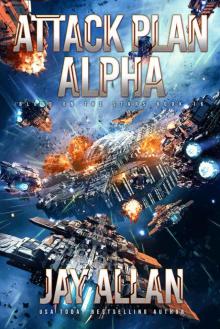 Attack Plan Alpha (Blood on the Stars Book 16)
Attack Plan Alpha (Blood on the Stars Book 16) BOB's Bar (Tales From The Multiverse Book 2)
BOB's Bar (Tales From The Multiverse Book 2) The Others
The Others Nightfall
Nightfall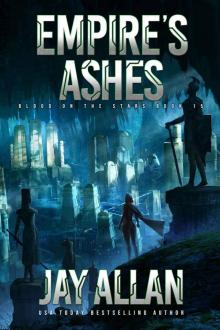 Empire's Ashes (Blood on the Stars Book 15)
Empire's Ashes (Blood on the Stars Book 15)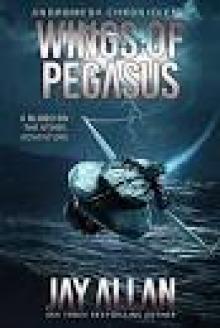 Wings of Pegasus
Wings of Pegasus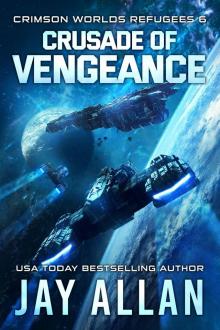 Crusade of Vengeance
Crusade of Vengeance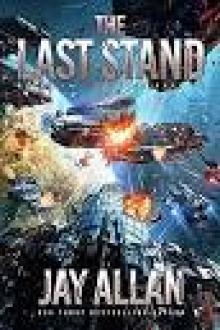 The Last Stand
The Last Stand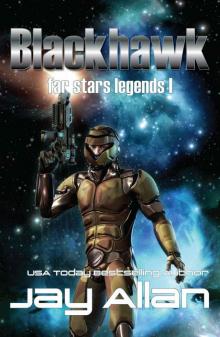 Blackhawk: Far Stars Legends I
Blackhawk: Far Stars Legends I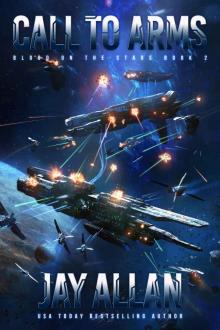 Call to Arms: Blood on the Stars II
Call to Arms: Blood on the Stars II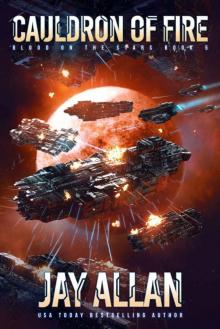 Cauldron of Fire (Blood on the Stars Book 5)
Cauldron of Fire (Blood on the Stars Book 5) Revenge of the Ancients: Crimson Worlds Refugees III
Revenge of the Ancients: Crimson Worlds Refugees III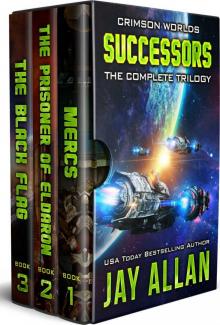 Crimson Worlds Successors: The Complete Trilogy
Crimson Worlds Successors: The Complete Trilogy The Grand Alliance
The Grand Alliance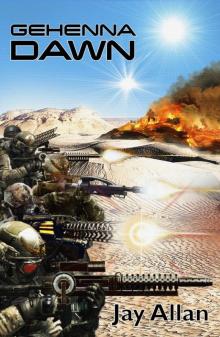 Portal Wars 1: Gehenna Dawn
Portal Wars 1: Gehenna Dawn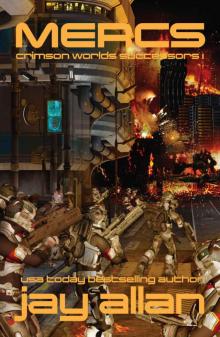 MERCS: Crimson Worlds Successors
MERCS: Crimson Worlds Successors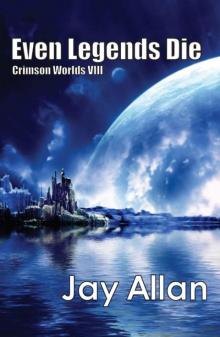 Crimson Worlds: 08 - Even Legends Die
Crimson Worlds: 08 - Even Legends Die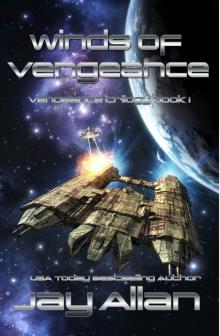 Winds of Vengeance
Winds of Vengeance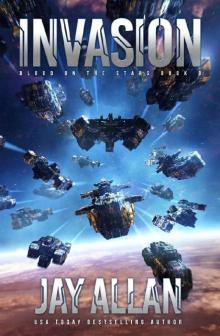 Invasion (Blood on the Stars Book 9)
Invasion (Blood on the Stars Book 9) A Little Rebellion (Crimson Worlds III)
A Little Rebellion (Crimson Worlds III)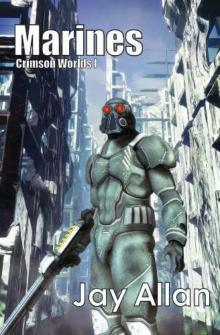 Marines
Marines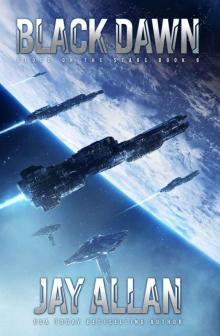 Black Dawn (Blood on the Stars Book 8)
Black Dawn (Blood on the Stars Book 8) Shadow of Empire
Shadow of Empire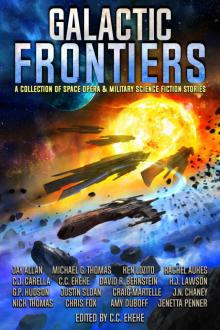 Galactic Frontiers: A Collection of Space Opera and Military Science Fiction Stories
Galactic Frontiers: A Collection of Space Opera and Military Science Fiction Stories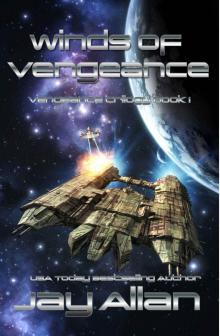 Winds of Vengeance (Crimson Worlds Refugees Book 4)
Winds of Vengeance (Crimson Worlds Refugees Book 4)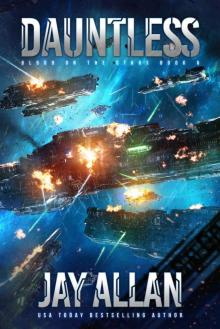 Dauntless (Blood on the Stars Book 6)
Dauntless (Blood on the Stars Book 6) Portal Wars: The Trilogy
Portal Wars: The Trilogy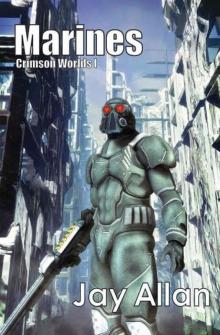 Marines cw-1
Marines cw-1 The Cost of Victory
The Cost of Victory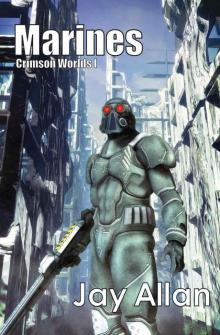 Marines (Crimson Worlds)
Marines (Crimson Worlds) The Ten Thousand: Portal Wars II
The Ten Thousand: Portal Wars II The White Fleet (Blood on the Stars Book 7)
The White Fleet (Blood on the Stars Book 7)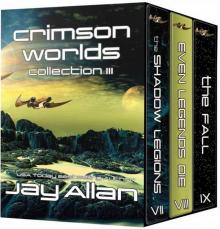 Crimson Worlds Collection III
Crimson Worlds Collection III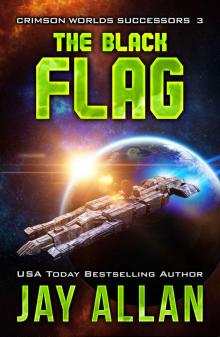 The Black Flag (Crimson Worlds Successors Book 3)
The Black Flag (Crimson Worlds Successors Book 3) Tombstone
Tombstone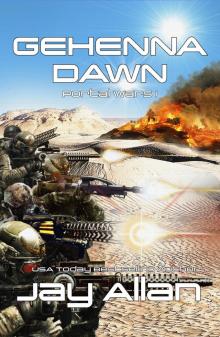 Gehenna Dawn
Gehenna Dawn A Little Rebellion (Crimson Worlds)
A Little Rebellion (Crimson Worlds)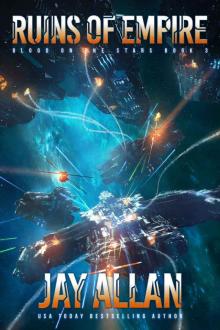 Ruins of Empire: Blood on the Stars III
Ruins of Empire: Blood on the Stars III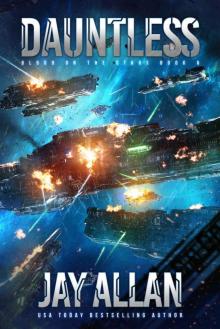 Dauntless
Dauntless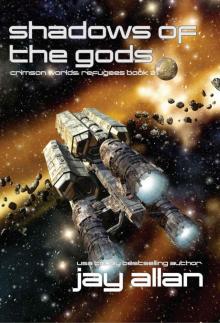 Shadows of the Gods: Crimson Worlds Refugees II
Shadows of the Gods: Crimson Worlds Refugees II The Dragon's Banner
The Dragon's Banner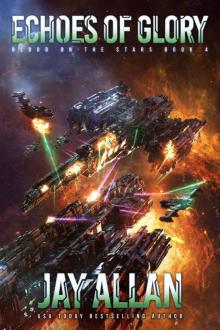 Echoes of Glory (Blood on the Stars Book 4)
Echoes of Glory (Blood on the Stars Book 4)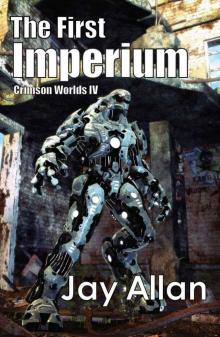 Crimson Worlds: 04 - The First Imperium
Crimson Worlds: 04 - The First Imperium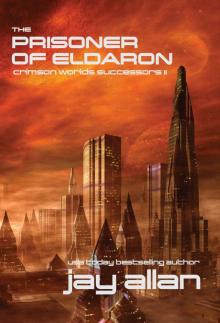 The Prisoner of Eldaron: Crimson Worlds Successors II
The Prisoner of Eldaron: Crimson Worlds Successors II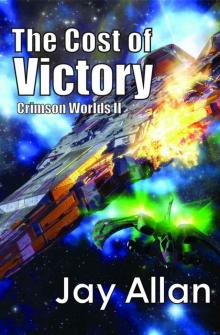 The Cost of Victory (Crimson Worlds)
The Cost of Victory (Crimson Worlds)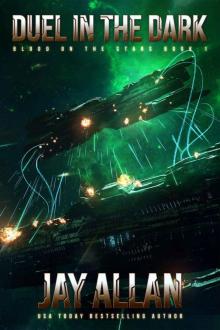 Duel in the Dark: Blood on the Stars I
Duel in the Dark: Blood on the Stars I Into the Darkness: Crimson Worlds Refugees I
Into the Darkness: Crimson Worlds Refugees I Crimson Worlds Refugees: The First Trilogy
Crimson Worlds Refugees: The First Trilogy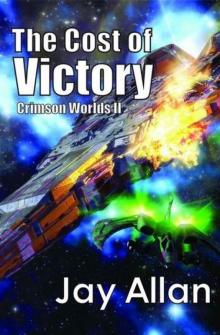 The Cost of Victory cw-2
The Cost of Victory cw-2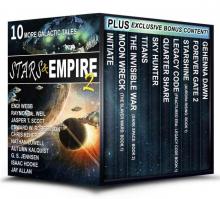 Stars & Empire 2: 10 More Galactic Tales (Stars & Empire Box Set Collection)
Stars & Empire 2: 10 More Galactic Tales (Stars & Empire Box Set Collection) Flames of Rebellion
Flames of Rebellion Stars & Empire: 10 Galactic Tales
Stars & Empire: 10 Galactic Tales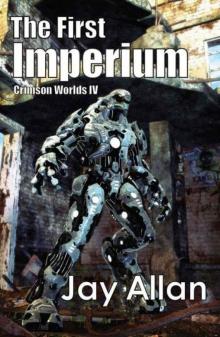 The First Imperium cw-4
The First Imperium cw-4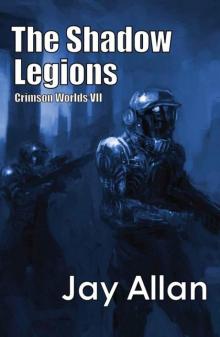 Crimson Worlds: 07 - The Shadow Legions
Crimson Worlds: 07 - The Shadow Legions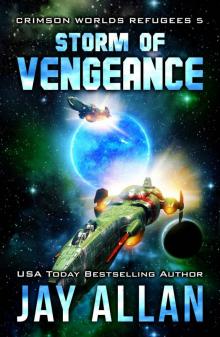 Storm of Vengeance
Storm of Vengeance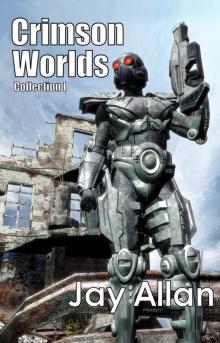 Crimson Worlds Collection I
Crimson Worlds Collection I Rebellion's Fury
Rebellion's Fury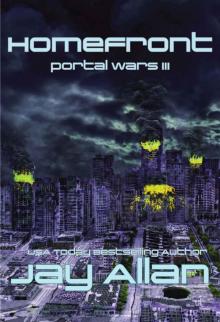 Homefront: Portal Wars III
Homefront: Portal Wars III Tombstone (crimson worlds)
Tombstone (crimson worlds) Crimson Worlds: Prequel - Bitter Glory
Crimson Worlds: Prequel - Bitter Glory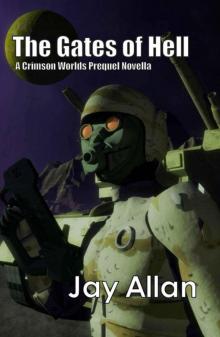 Crimson Worlds: Prequel - The Gates of Hell
Crimson Worlds: Prequel - The Gates of Hell The Fall: Crimson Worlds IX
The Fall: Crimson Worlds IX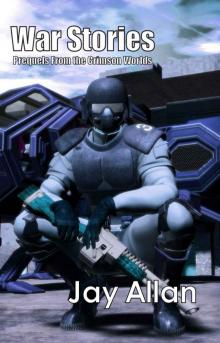 Crimson Worlds: War Stories: 3 Crimson Worlds Prequel Novellas
Crimson Worlds: War Stories: 3 Crimson Worlds Prequel Novellas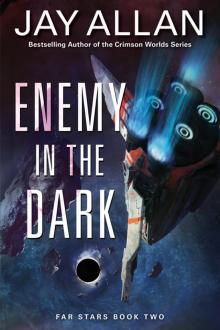 Enemy in the Dark
Enemy in the Dark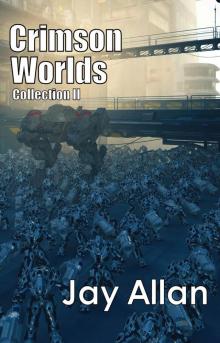 Crimson Worlds Collection II
Crimson Worlds Collection II